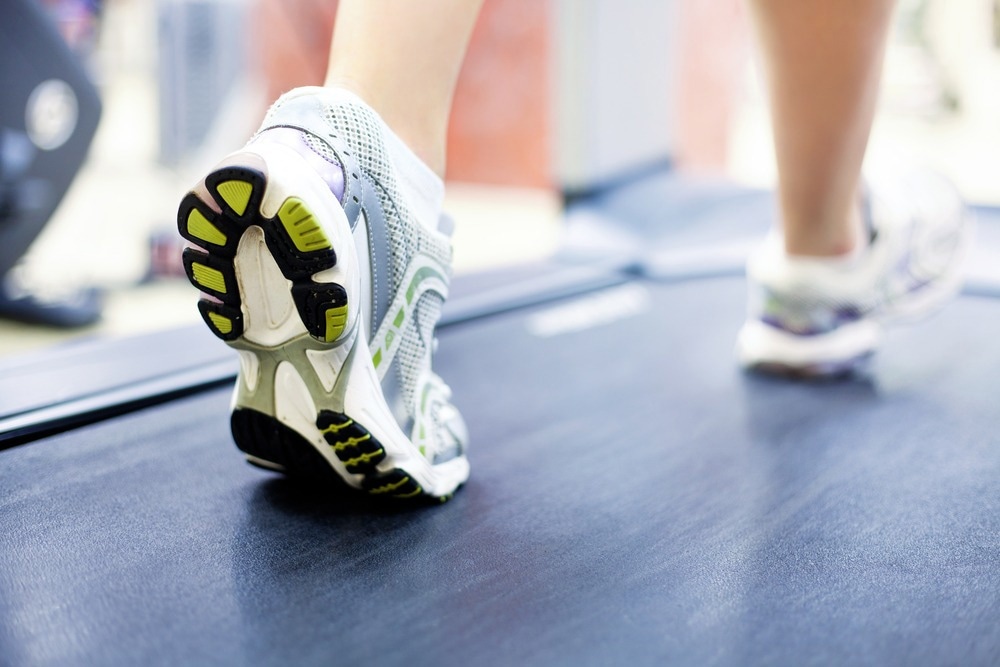In a recent study published in the British Journal of Sports Medicine, researchers assessed the association between daily physical activity (PA) and coronavirus disease 2019 (COVID-19) vaccination among HCWs (healthcare workers).
 Study: Association between regular physical activity and the protective effect of vaccination against SARS-CoV-2 in a South African case–control study. Image Credit: YanLev/Shutterstock
Study: Association between regular physical activity and the protective effect of vaccination against SARS-CoV-2 in a South African case–control study. Image Credit: YanLev/Shutterstock
Background
COVID-19 has caused significant morbidity and mortality across the globe. Studies have reported that both PA and vaccination independently reduce the risk of SARS-CoV-2 (severe acute respiratory syndrome coronavirus 2) infection severity outcomes such as hospitalizations, intensive care unit (ICU) admissions, and deaths.
About the study
In the present test-negative case-control study, researchers investigated the association between PA and vaccination against SARS-CoV-2.
The retrospective study was conducted between February 16, 2021, and October 30, 2021, utilizing anonymized data from adult Discovery Health and Vitality (DHV) clients concerning demographics, chronic medical conditions, operational information, and pathological examination reports. The team obtained COVID-19 data from Discovery Health’s pre-authorization records.
PA records were obtained from Vitality data, including measured PA information from wearable health devices (PA minutes, heart rate, and step count), mass-scale events, and timed gymnasium sessions. The frequency, duration, and type of PA were recorded under the Vitality Health behavior modification program.
COVID-19 polymerase chain reaction (PCR) reports of 258,293 DHV members between February 15 and October 31, 2021, were analyzed. The team excluded test reports of non- Ad26.COV2.S COVID-19 vaccinees, indeterminate results, and SARS-CoV-2-negative results within three weeks of SARS-CoV-2-positive results.
The team estimated SARS-CoV-2-associated hospitalization risks among unvaccinated individuals compared to those vaccinated completely with Ad26.COV2.S vaccine doses >28 days apart. One hundred ninety-six thousand four hundred forty-four participant tests were categorized into three groups based on their PA as high (≥150 minutes of moderate or high PA weekly), moderate (60 to 149 minutes of moderate or high PA weekly) or low (<1 hour of moderate or high-intensity PA weekly). Sensitivity analyses were performed, and modified Poisson regression modeling was used for the analysis.
Results and discussion
A total of 269,101 patients with SARS-CoV-2-positive PCR reports were included initially, of which 10,198 were excluded since they were aged below 18 years. Further, 4,957 individuals were excluded due to negative test reports within three weeks of positive results, and 6,239 individuals were excluded due to negative results in the previous week of negative results.
Further, 1,965 patients were excluded due to previous positive reports within six weeks, 69 were excluded since they received multiple COVID-19 vaccines, 402 had missing data, 20,003 were excluded due to second vaccination, and 28,834 were excluded due to lack of three random test reports. As a result, 196,444 patients were analyzed, of which 79,952, 62,721, and 53,771 patients belonged to the high, moderate, and low PA groups, respectively.
Within the low, moderate, and high PA groups, 64%, 56%, and 51% of the participants were women, respectively, most of the participants across the groups were aged between 18 years and 44 years, and most of them had no prior COVID-19 history. Among low PA individuals, 94% and five percent were unvaccinated and fully vaccinated, respectively.
The corresponding percentages among moderate PA individuals were 94% and five percent % and in high PA individuals, 92% and seven percent, respectively. Among vaccinated individuals, vaccine effectiveness (VE) values against SARS-CoV-2-associated hospitalization for low, moderate, and high PA levels were 60%, 72%, and 86%, respectively.
Compared to low PA COVID-19 vaccinees, those with high and moderate PA levels had 2.8-fold and 1.4-fold lower risks of SARS-CoV-2-associated hospitalization, respectively. Analyzing PCR reports from a cohort of admitted patients, COVID-19 admission VE among the fully vaccinated individuals in low, moderate, and high PA groups were 39%, 47%, and 70%, respectively.
Using a single multinomial modified Poisson regression model, a 92% VE for vaccinated and high PA individuals in relation to unvaccinated and low PA individuals was observed. Bayesian modeling analysis showed a 25% VE difference between vaccinated individuals with high PA and low PA in relation to the unvaccinated and low PA individuals.
The main analysis and sensitivity analysis findings were comparable. Higher VE among active individuals could be due to several factors reasons involving psychosocial factors, increased antibody (especially salivary immunoglobulin A) titers, and enhanced T lymphocyte (especially CD4 helper T lymphocytes) responses. PA has also been reported to regulate mitochondrial biogenesis.
Conclusion
Overall, the study findings showed that higher PA levels were associated with improved VE against SARS-CoV-2-associated hospitalization. Therefore, public health messaging should encourage PA as a cost-effective and simple method of enhancing VE for mitigating the risks of COVID-19 severity outcomes.